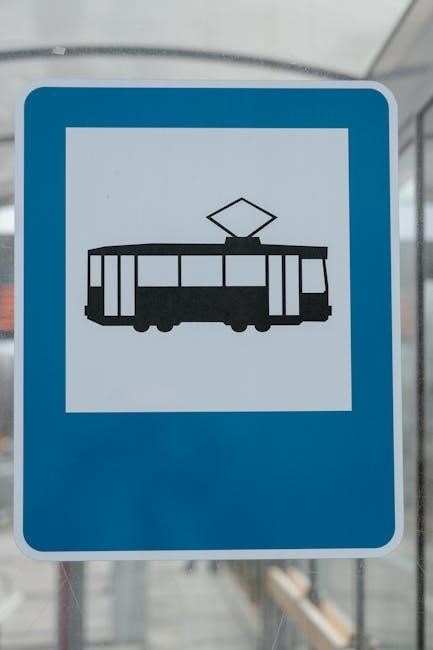Manual pull stations are crucial components of fire alarm systems, allowing occupants to initiate alarms in emergency situations, typically required as a backup to automatic detection systems, ensuring timely response and safety always.
Definition and Purpose
A manual pull station is a device that allows individuals to manually initiate a fire alarm signal in emergency situations, playing a critical role in ensuring timely response and safety.
The primary purpose of a manual pull station is to provide a means for occupants to quickly alert others in the event of a fire or other emergency, thereby facilitating prompt evacuation and emergency response.
This device is typically a simple, easily accessible mechanism that can be activated by pulling a lever or handle, sending a signal to the fire alarm system, which then alerts occupants and emergency responders.
In essence, the manual pull station serves as a vital backup to automatic fire detection systems, providing an additional layer of protection and ensuring that help can be summoned quickly in emergency situations, thus saving lives and property.
The definition and purpose of manual pull stations are closely tied to their function as a critical component of fire alarm systems, emphasizing their importance in maintaining a safe environment.

Types of Manual Pull Stations
Manual pull stations include coded and non-coded models, with various features and certifications, such as Edwards EST models, available for different applications and installations always.
Examples of Manual Pull Stations
Examples of manual pull stations include the Edwards EST 270A-DPO, Edwards EST 270A-SPO, and Edwards EST 276A-REL, which are available for purchase online, with prices ranging from $50 to $125.
These stations are designed to be durable and reliable, with features such as manual release and non-coded operation.
The Edwards EST 270P-SPO is another example, priced at $90, and is a popular choice for fire alarm systems, with its easy-to-use design and compatibility with various fire alarm panels.
Other examples include the PUSOKEI Fire Alarm Pull Station, which is a manual multiple wire system safety fire pull station alarm, designed for use in a variety of applications, including commercial and residential buildings.
These manual pull stations are essential components of fire alarm systems, providing a reliable means of initiating an alarm in emergency situations, and are available from various manufacturers and online retailers.

Installation and Testing Requirements
Manual pull stations must be installed and tested by a professionally licensed fire protection firm to ensure compliance with regulations and safety standards always and properly.
Inspection and Testing Frequency
Manual pull stations must be inspected and tested regularly to ensure they function properly in emergency situations.
A visual inspection should be performed every 6 months to check for any damage or tampering.
Additionally, a test should be performed annually to verify that the pull station is initiating an alarm signal correctly.
This testing is crucial to ensure that the fire alarm system is functioning as intended and that occupants can rely on it in case of an emergency.
The inspection and testing frequency may vary depending on the specific regulations and codes in the area, but it is generally recommended to follow the guidelines set by the National Fire Protection Association.
By inspecting and testing manual pull stations regularly, building owners and managers can help ensure the safety of occupants and comply with fire safety regulations.
Regular inspection and testing can help identify potential issues before they become major problems.

Regulations and Codes
Fire alarm systems must comply with National Fire Protection Association codes and regulations always ensuring safety.
NFPA 101 Requirements
NFPA 101 requires at least one manual pull station for any fire alarm system that uses automatic fire detection devices, such as smoke detectors and heat sensors, or water flow detection devices, like sprinklers. The number of manual pull stations required depends on the size of the area to be protected. NFPA 101 provides specific guidelines for the installation and placement of manual pull stations, including requirements for their location, accessibility, and visibility. These requirements are designed to ensure that manual pull stations are readily available and easily accessible in emergency situations. By following NFPA 101 requirements, building owners and managers can help ensure that their fire alarm systems are compliant with national standards and provide effective protection for occupants. NFPA 101 requirements are widely adopted and enforced by local authorities, making them a critical component of fire safety planning and implementation.

Accessibility and Maintenance
Manual pull stations must remain accessible and unobstructed always ensuring easy use.
Importance of Unobstructed Access
Unobstructed access to manual pull stations is crucial for ensuring timely response in emergency situations, as it allows occupants to quickly initiate an alarm, which is critical for safety and minimizing damage.
According to fire codes, manual pull stations should remain unobstructed and accessible at all times, as tampering with or covering pull stations can delay emergency response and is generally prohibited.
Fire protection firms emphasize the importance of maintaining clear access to manual pull stations, ensuring that they are not blocked by furniture, doors, or other obstacles, and that occupants can easily locate and use them in emergency situations, thereby ensuring a prompt response from emergency services.
By maintaining unobstructed access to manual pull stations, building owners and occupants can help prevent accidents and minimize the risk of injury or damage, while also complying with fire safety regulations and codes.
